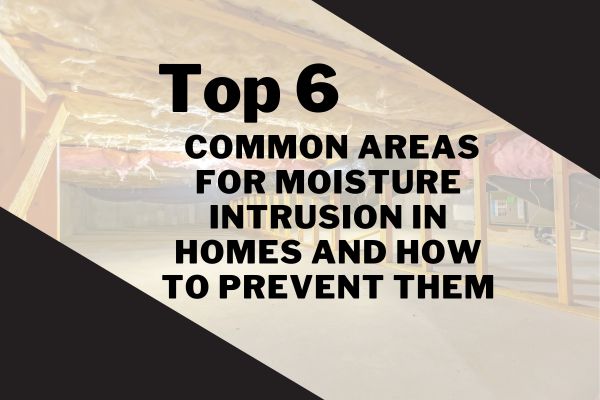
Top 6 Common Areas for Moisture Intrusion in a Home

The Common Spots Where Moisture Sneaks into Your Home (And How to Stop It)
Moisture in your home can be sneaky, showing up in places you’d never expect and causing all sorts of issues. At Glacier Peak Homes, we take moisture management seriously to ensure our homes are as healthy as they are beautiful. Let’s look at some of the most common areas where moisture likes to intrude and how you can keep your home dry and happy.
1. The Roof & Attic
Your roof is your home’s first line of defense against the elements, but it can also be one of the most vulnerable spots. Missing shingles, clogged gutters, or poor flashing can let water sneak in. Poor flashing is a common problem in new construction. Sometimes it can even just be missing at the juncture between a roof and a second story side wall. Once inside, it can damage insulation and lead to mold. Keep your roof healthy by regularly cleaning gutters and checking for loose shingles.
2. Windows & Doors
Window flashing is critical for preventing moisture intrusion because it acts as a protective barrier that directs water away from the window and its surrounding structure. Without proper flashing, water can seep into gaps between the window and the wall, leading to rot, mold growth, and damage to the framing or insulation. Flashing ensures that water is channeled outward, preventing leaks and maintaining the integrity of your home’s exterior. It's especially important in areas prone to heavy rain or wind, where water pressure can force moisture through small cracks or seams. Properly installed flashing is key to long-lasting protection against water damage.
3. Exterior Walls & Siding
Cracks or gaps in your home’s siding or brickwork are open invitations for moisture. If water gets in, it can cause rot, mold, and even structural damage. The best way to defend against this is by regularly inspecting your home’s exterior and fixing any cracks or damaged siding.
4. Foundation & Basement
The foundation is key to your home’s strength, but water can cause big problems here. Poor drainage, foundation cracks, and unsealed basement walls can all lead to moisture buildup, which can cause mold or even basement flooding. Keep water away from your foundation by ensuring proper grading around your home and installing drainage systems if needed. This is best done in the beginning of new home construction. We regularly help people with this topic
5. Bathrooms & Kitchens
These rooms see a lot of water use, so it’s no surprise they can be moisture trouble spots. Leaky pipes, worn-out seals, and poor ventilation can let moisture linger and lead to mold or rot. Make sure your plumbing is in good shape and use ventilation fans to clear out excess humidity. We also recommend water alarms in these spaces.
6. Crawl Spaces
Crawl spaces might not be top of mind, but they can trap moisture if they’re not properly ventilated. Humid air and water from the ground can cause mold or wood rot. Installing a killer vapor barrier like Stego makes and ensuring good airflow will help keep moisture at bay.
How Glacier Peak Homes Handles Moisture
At Glacier Peak Homes, we’re all about building homes that are designed to last. We focus on moisture management from day one, using the best materials and construction techniques to protect your home from water damage. From top-quality flashing to installing everything correctly and with care, we go the extra mile to keep your home dry and comfortable.
Final Thoughts
Moisture might be sneaky, but it doesn’t have to cause problems in your home. By keeping an eye on these common areas and choosing a builder who prioritizes moisture management, you can protect your home and enjoy a healthier, more comfortable living space. At Glacier Peak Homes, we’re here to make sure moisture stays outside where it belongs!